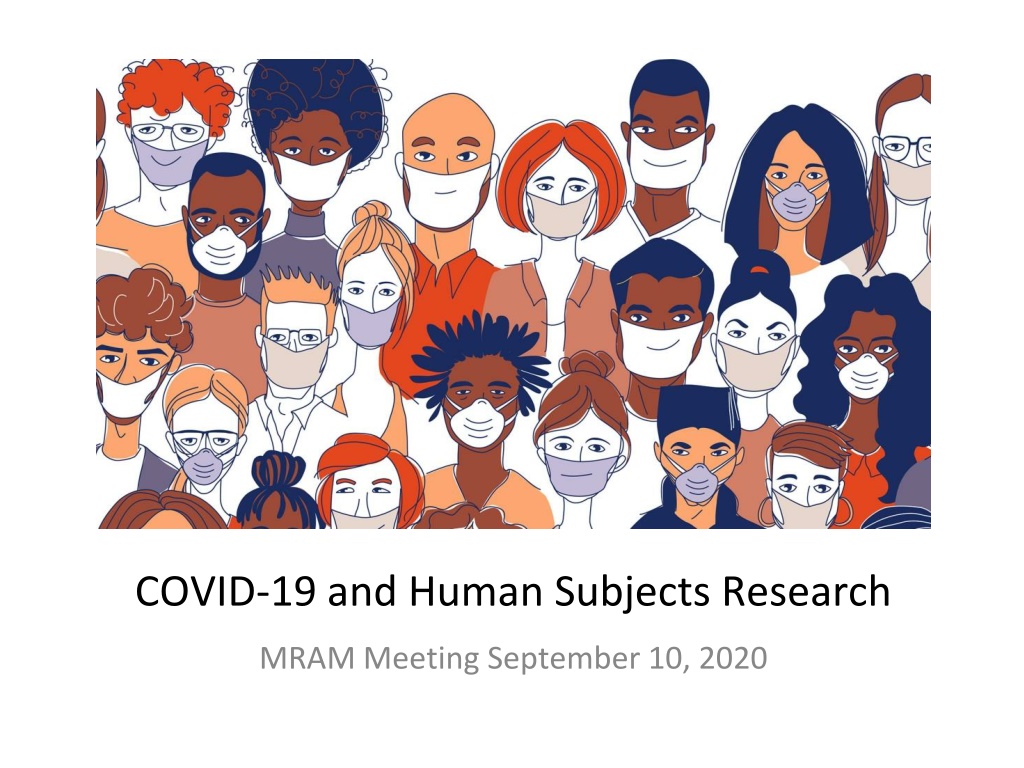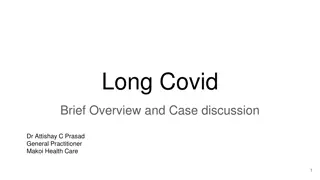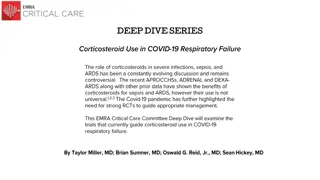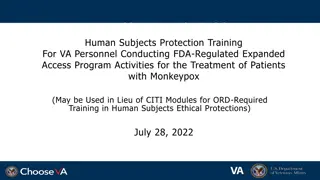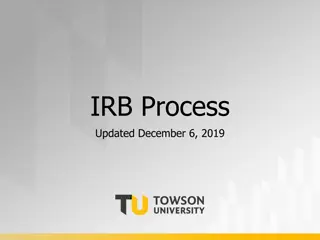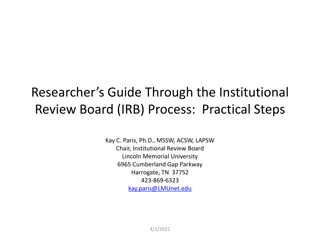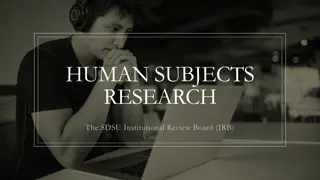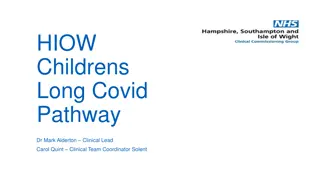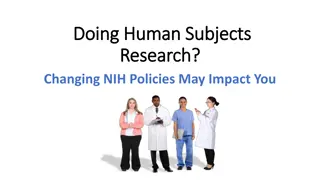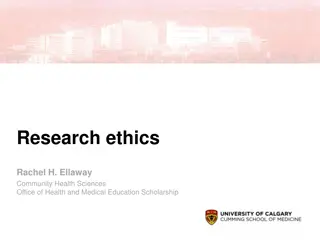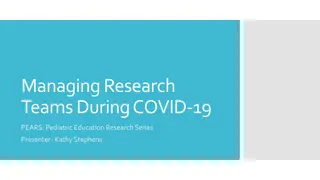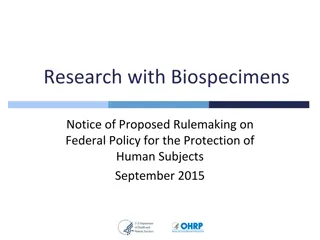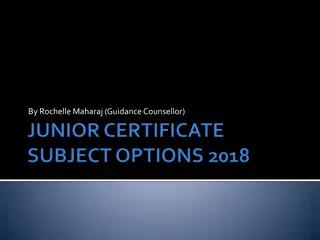COVID-19 and Human Subjects Research
In this collection of information slides, updates regarding COVID-19 and human subjects research are outlined. Changes, expectations, controls, and identification of allowed research are discussed. The removal of the checklist and managing COVID-19 risks and benefits are highlighted, offering insights for researchers navigating the current landscape.
Download Presentation

Please find below an Image/Link to download the presentation.
The content on the website is provided AS IS for your information and personal use only. It may not be sold, licensed, or shared on other websites without obtaining consent from the author.If you encounter any issues during the download, it is possible that the publisher has removed the file from their server.
You are allowed to download the files provided on this website for personal or commercial use, subject to the condition that they are used lawfully. All files are the property of their respective owners.
The content on the website is provided AS IS for your information and personal use only. It may not be sold, licensed, or shared on other websites without obtaining consent from the author.
E N D
Presentation Transcript
COVID-19 and Human Subjects Research MRAM Meeting September 10, 2020
Summary of Changes Implemented August 12, 2020 NEW expectations for all research involving in-person interactions ARCHIVE (eliminate) the CHECKLIST Human Subjects Research During the COVID-19 Pandemic NEW risk-based identification of allowed research
Expectations for ALL research involving in- person interactions (ongoing & new) Common-sense infection & severity controls: 1. All in-person interactions must be essential 2. Face coverings worn by all 3. Symptom screening of participants & study staff 4. No subjects over age 85 exceptions possible
These are common-sense infection & severity controls They are also UW & UW Medicine policies for all staff, not just for research. We ask researchers to confirm compliance when they apply for IRB approval Question 1.10 on IRB Protocol form
CHECKLIST Human Subjects Research During the COVID-19 Pandemic Now removed. Why? Almost universally confusing A well-intentioned attempt to make things easier for researchers by bringing together requirements from multiple places Researchers need fewer COVID documents, not more
Identification of Allowed Research Goal: Manage the impact of COVID-19 on the risks and benefits, based on limited knowledge of COVID and sense of which methods/types of research might be most risky. Previous approach was based on categorizing research according to intent, benefit to subjects, and method
How to make the categories more workable & up-to-date? Categories 1, 2, and 3 still make sense but not the others. 1 no in-person interactions 2 COVID research 3 Most clinical trials
A more direct risk assessment is now possible
Solid, reliable scientific information Minimizing the risk of infection People/circumstances associated with severity
The Change Keep Categories 1, 2, and 3 as they are. If the research fits into one of these, go ahead. If the research doesn t fit into one of the categories: the researcher assesses with the COVID-19 Relative Risk self-assessment tool
COVID-19 Relative Risk Self-Assessment Tool Use this new tool to assess new or halted research that doesn t fit into Categories 1,2, 3 For new or currently halted research that doesn t fit into Category 1, 2, or 3. Who uses it Researchers Is it a required part of the IRB application? No, don t send it to the IRB. It is for researcher use only.
How it works 1. Score the research on 5 COVID risk factors State of the pandemic in geographic area Participant age Subject medical conditions & need for research trip Physical distancing # people interacting with subjects 2. Add the 5 scores, for a Total Relative Risk Score. 3. Compare Total Score to allowable range.
Advantages of this approach Directly based on major risks for COVID infection & severity Evidence-based & reviewed by several experts Easier for researchers to apply Researchers can see what changes might significantly lower the COVID risk profile of a study Can be easily adjusted/revised as new information about COVID 19 becomes known There is a process for requesting an exception It will be revised only when there is significant, reliable new information that is affecting University-wide operations i.e., infrequently
Revisions to the Risk Tool Example scenarios The pandemic becomes very bad in our area. A major new risk factor is discovered. How revisions will be communicated Usual ways for very broad/redundant messaging Might some ongoing research might have to halt? Yes, but this was true of previous approach too, and all COVID-related policies generally
Lots of information is embedded in the tool The actual scoring system is set within lots of text. Purpose: Provide details and interpretation Address specific situations (e.g., international research, review by external IRBs) Anticipate as many questions as possible
Vetted for accuracy and sensibility Office of Research UW Advisory Committee on Communicable Diseases Faculty infectious disease experts UW Risk Management School of Medicine leaders
Why Allow Exceptions? Exception = allowing research that has a Total Relative Risk Score above the allowable range.
Exceptions Allowed When 1. Extraordinary benefit of a study whose score is just above the allowable range. 2. Participant protections that aren t captured by the Risk tool example, additional Personal Protective Equipment such as N95 masks, face shields, full gear
Questions About the Tool Answers will usually be in the footnotes Send all other questions and requests for exceptions to hsdinfo@uw.edu
